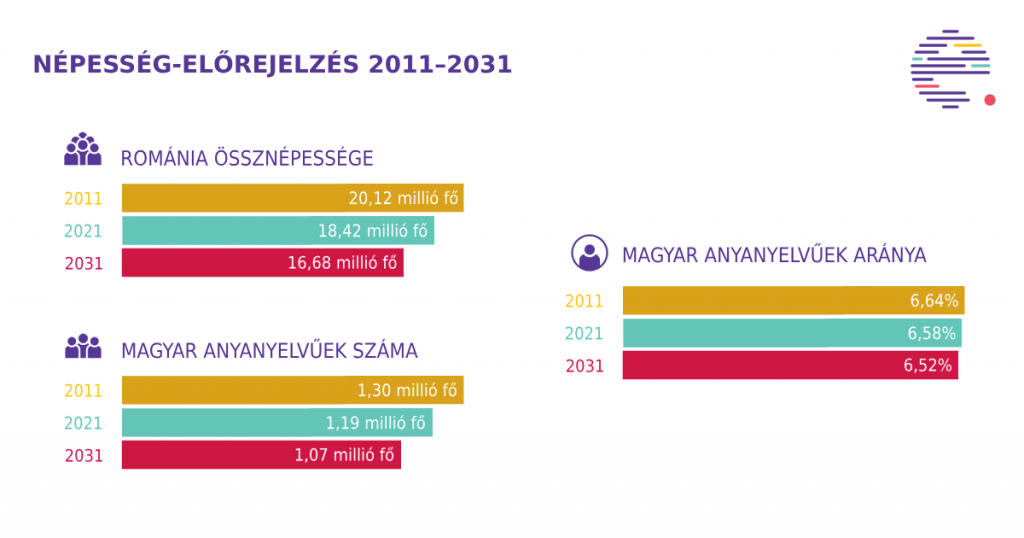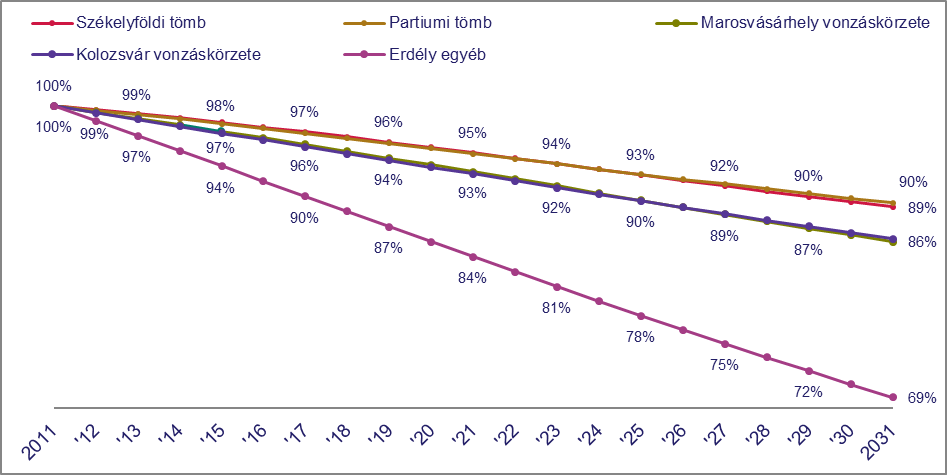ErdélyStat, a site publishing Transylvanian statistics and analyses has now published a thorough analysis on the expected evolution of the population with Hungarian native language in the upcoming decade.
The cohort component up until the recent past was a predominant method in the field of population projection and is a widely used method still. Its advantage comes from the fact that proceeding from the age structure (that is recorded by census or other administrative database) it is able to approximate in a relatively accurate way the expected evolution of the number and structure of the population. This is true primarily for the number of deaths and birth rates. These are predominantly depending on the age structure because the number of death cases depend on the level of aging and the number of births depends on the size of the female contingent with the fertile age. On the other hand the willingness for childbearing and the probability for mortality in some cultures change in a somewhat slow way so there may be formulated more or less realistic hypotheses related to their future evolution.

Population forecast 2011-2031
Total population of Romania
Number of population with Hungarian native language
Ratio of Hungarian population
When it comes to the migration and immigration, the capacity of forecasting of the demographer is even more limited. There are some theories that try to fix the location of migration within a human walk of life. And indeed, in some societies, entering the labor market, certain stages of the educational course of life or the founding of a family have a great chance to draw a spatial displacement. In spite of this, migration does not have a place universally recordable within the human stage of life. The number of migrants depends on factors, that can change on the short term (migration politics for example) or those, that are not in the range of competence of the demographers (for example the evolution of economic trends). Thus, the forecast calculations of population cannot be considered as forecasts for the future, only as model-calculation, in other words: “if…than’’ type of statements.
“Our own forecast calculations, that model the evolution of the Transylvanian Hungarian and the total Romanian population between the years 2011 and 2031 can be considered also as a “if…than” type of analysis.” states Erdélystat. „The question is even more complicated due to fact that because we are speaking about a minority population, we had to determine (with the tools of demography) its borders and also what we consider to be ethnic border crossing.”
„It is also important, that in opposition to an analysis of ours, that was based on the 2002 demographical data, now we did not define the Hungarian community as an ethnic group, but a language-based one. We forecast the population on four levels. These are the following: Romania, Transylvania, the 16 counties of Transylvania and the 50 educational micro-regions.” states Erdélystat.
The results of the population-forecast according to the ethno-demographic regions defined by Erdélystat. (2011=100%)

Szeklerland mass area
Agglomeration of Kolozsvár/Cluj-Napoca
Partium mass area
Other in Transylvania
Agglomeration of Marosvásárhely/Targu-Mures
The detailed analysis of counties would need a much greater dimension. Here it is worth to note, that the changing of the language ratio in some counties depends to a great extent on the initial starting point. Thus, from the counties of Szeklerland and Partium in the case of Hargita/Harghita, Kovászna/Covasna, Szatmár/Satu-Mare and Szilágy/Zalau a groving of ratio is expected, while in the cases of Bihar/Bihor and Maros/Mures a slight decrease of ratio is likely. In all the counties outside of the mass Hungarian areas we can count on a significant decrease of ratio.
The bottom line of the analysis – as seen in the first chart – is that the Hungarian population of Transylvania will decline at roughly the same rate as that of the country as a whole, meaning that the total population will fall to 16.68 million by 2031 from the 20.12 million in 2011 while the ratio of Hungarians will edge lower to 6.52 percent from 6.64 percent.
More details of the analysis on erdelystat.ro
Featured image: atgbcentral.com